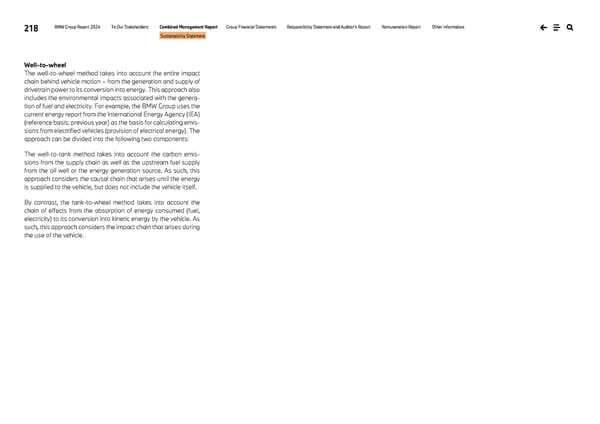218 BMW Group Report 2024 To Our Stakeholders Combined Management Report Group Financial Statements Responsibility Statement and Auditor’s Report Remuneration Report Other Information Sustainability Statement Well-to-wheel The well-to-wheel method takes into account the entire impact chain behind vehicle motion – from the generation and supply of drivetrain power to its conversion into energy. This approach also includes the environmental impacts associated with the genera- tion of fuel and electricity. For example, the BMW Group uses the current energy report from the International Energy Agency (IEA) (reference basis: previous year) as the basis for calculating emis- sions from electrified vehicles (provision of electrical energy). The approach can be divided into the following two components: The well-to-tank method takes into account the carbon emis- sions from the supply chain as well as the upstream fuel supply from the oil well or the energy generation source. As such, this approach considers the causal chain that arises until the energy is supplied to the vehicle, but does not include the vehicle itself. By contrast, the tank-to-wheel method takes into account the chain of effects from the absorption of energy consumed (fuel, electricity) to its conversion into kinetic energy by the vehicle. As such, this approach considers the impact chain that arises during the use of the vehicle.
 BMW Group Report 2024 Page 217 Page 219
BMW Group Report 2024 Page 217 Page 219